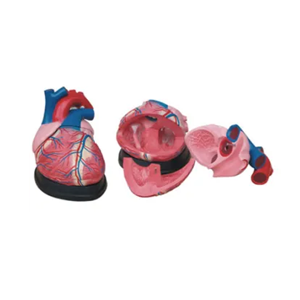Cardiac anatomy model has a profound and important impact on medical education, mainly reflected in the following aspects:
As one of the most important organs of the human body, the heart has a complex anatomical structure and vital function. The anatomical model of the heart intuitively shows the external shape, internal structure and the connection between different parts of the heart through the three-dimensional form. This intuitive teaching method helps students quickly build up an accurate knowledge of the heart's anatomy and thus gain a deeper understanding of the physiological function of the heart.

In medical education, it is not only an auxiliary tool for theoretical learning, but also an important platform for practical operation. Students can learn the basic steps and operational points of heart surgery by observing, touching, and simulating the operation of a cardiac anatomy model. This combination of theory and practice helps to improve students' clinical skills and surgical operations.
It can also be used as an important tool for doctor-patient communication. In medical teaching, teachers can use the cardiac anatomy model to explain to students and patients the anatomical structure and function of the heart, as well as the pathogenesis and treatment of heart diseases. This intuitive way of communication helps to enhance trust and understanding between doctors and patients, improve teaching quality and patient satisfaction.
With the continuous progress of science and technology, the production technology and application range of cardiac anatomy model are also expanding. Modern cardiac anatomical model not only has a high degree of authenticity and accuracy, but also provides new ideas and technical support for medical research and clinical practice.
To sum up, cardiac anatomy model plays an irreplaceable role in medical education. It can not only help students better understand and master the anatomical structure and physiological function of the heart, but also improve students' clinical skills and surgical operation level, promote doctor-patient communication, and promote medical innovation and development.
